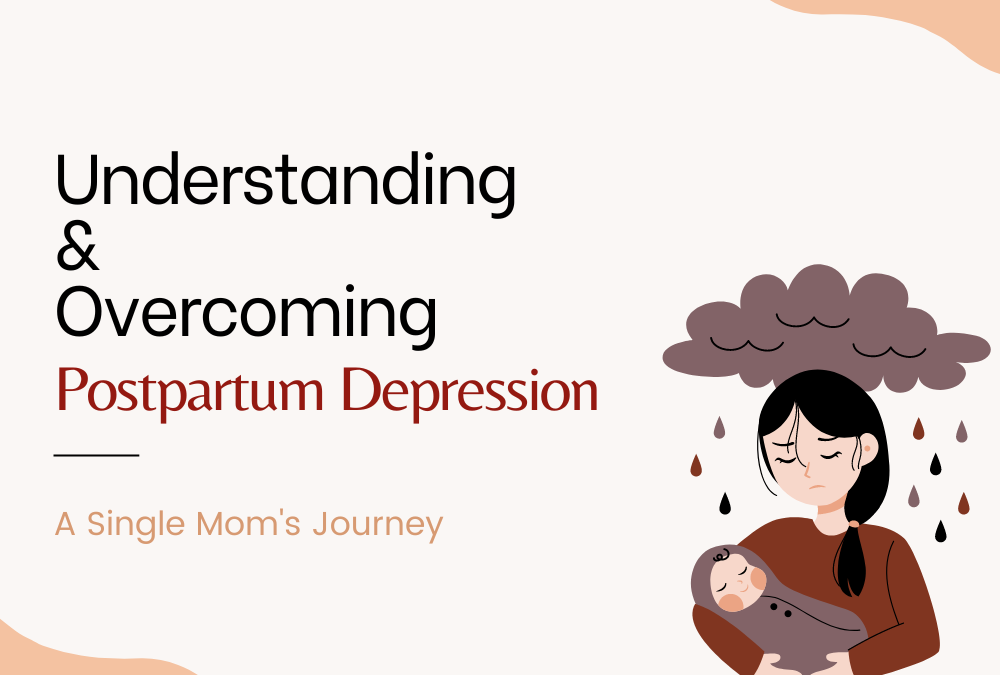Bringing a new life into the world is a profound experience filled with joy, love, and a sense of fulfillment. However, for many new mothers, this joy can be overshadowed by a serious condition called postpartum depression (PPD). As a single mom of two school-going boys, I’ve walked this path twice and want to share my story to help others recognize the signs and find the strength to overcome it.
Recognizing the Signs of Postpartum Depression
Postpartum depression is more than just the “baby blues,” which many new moms experience. The baby blues usually involve mood swings, crying spells, anxiety, and difficulty sleeping but typically go away within a couple of weeks. PPD, on the other hand, is more intense and lasts longer. Here are some signs to look out for:
Persistent Sadness:
Feeling sad or hopeless most of the time, often without a clear reason.
Severe Mood Swings:
Extreme irritability or anger that seems out of proportion to the situation.
Withdrawal from Family and Friends:
Losing interest in activities you once enjoyed and distancing yourself from loved ones.
Changes in Appetite and Sleep:
Experiencing insomnia or sleeping too much, and significant weight loss or gain.
Difficulty Bonding with Your Baby:
Feeling indifferent or disconnected from your newborn
Overwhelming Fatigue
Feeling tired all the time, even after getting enough sleep.
Feelings of Worthlessness or Guilt:
Harshly criticizing yourself or feeling like you’re not a good mother.
Thoughts of Harming Yourself or Your Baby:
Having intrusive thoughts about hurting yourself or your child.
My Experience with Postpartum Depression
When I had my first son, everything seemed perfect at first. But soon, I found myself feeling overwhelmed and constantly anxious. I was exhausted beyond measure and felt an unshakable sadness that I couldn’t explain. The worst part was the guilt. I loved my son deeply, but I couldn’t shake the feeling that I wasn’t a good enough mother for him.
By the time my second son was born, I thought I would be better prepared. However, the feelings of sadness and anxiety returned, stronger than ever. Being a single mom made it even harder because I felt like I had to be strong for my boys, but inside, I was falling apart.
How I Overcame Postpartum Depression
Seeking Professional Help:
The first step in my recovery was recognizing that I needed help. I talked to my doctor, who referred me to a therapist specializing in postpartum depression. Therapy provided a safe space to express my feelings and work through my emotions.
Medication:
My doctor prescribed antidepressants, which helped balance the chemicals in my brain. It wasn’t an instant fix, but over time, I started to feel more like myself again.
Support System:
I reached out to family and friends and explained what I was going through. Their support was invaluable. My mom would watch the boys for a few hours so I could rest, and my friends would check in on me regularly.
Self-Care:
Taking care of myself was crucial. I made time for activities that I enjoyed, like reading and walking in the park. These small breaks helped me recharge and feel more connected to myself.
Joining a Support Group:
Connecting with other mothers who were experiencing PPD helped me feel less alone. We shared our stories, offered advice, and supported each other through tough times.
Moving Forward
If you’re experiencing postpartum depression, remember that you’re not alone and that it’s okay to ask for help. Recognizing the signs and seeking support are the first steps toward recovery. Being a single mom is challenging, but with the right support and self-care, you can overcome PPD and be the strong, loving parent your children need.
Every day with my boys is a reminder of the strength I found within myself to overcome postpartum depression. It wasn’t easy, but it was worth it. Now, I cherish every moment with them, grateful for the joy they bring into my life and the strength they’ve helped me discover.
Learning to read is really important for all kids. But what if your little one has a hard time reading? It could be because they learn best by seeing things visually. Meet our visionary graphic recorder, Ashton Rodenhiser. With a passion for empowering moms, kids, and women, she transforms learning and communication through her giant charts and ‘visual note-taking‘ expertise.
Join Ashton at Sketchnote School and unlock the power of creativity in learning!
Connect with Ashton:
Website Link: www.sketchnote.school
Beginner’s Guide to Sketchnoting – https://sketchnote.school/book/
Pinterest – www.pinterest.com/SketchnoteSchool
TikTok – https://www.tiktok.com/@mindseyecreative
LinkedIn- https://www.linkedin.com/in/ashtonrodenhiser/
Twitter – https://twitter.com/MindsEyeCCF
Instagram – https://www.instagram.com/ashtonmindseye/
Facebook – https://www.facebook.com/MindsEyeCreativeCF

